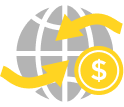Overview In 2022, Qatar was the number 52 economy in the world in terms of GDP (current US$), the number 38 in total exports, the number 67 in total imports, the number 6 economy in terms of GDP per capita (current US$) and the number 70 most complex economy according to the Economic Complexity Index (ECI) .
Exports The top exports of Qatar are Petroleum Gas ($66.9B), Crude Petroleum ($20.8B), Refined Petroleum ($14.9B), Nitrogenous Fertilizers ($3.42B), and Ethylene Polymers ($2.54B), exporting mostly to China ($21.1B), India ($17.4B), Japan ($12B), South Korea ($10.6B), and United Kingdom ($7.5B).
In 2022, Qatar was the world's biggest exporter of Sulphur ($1.64B)
Imports The top imports of Qatar are Gas Turbines ($2.45B), Jewellery ($2.37B), Cars ($2.28B), Planes, Helicopters, and/or Spacecraft ($1.04B), and Broadcasting Equipment ($1.04B), importing mostly from United Arab Emirates ($5.12B), China ($4.4B), United States ($3.81B), United Kingdom ($3.08B), and India ($2.1B).
Location Qatar borders Saudi Arabia by land and Bahrain, Iran, and United Arab Emirates by sea.




